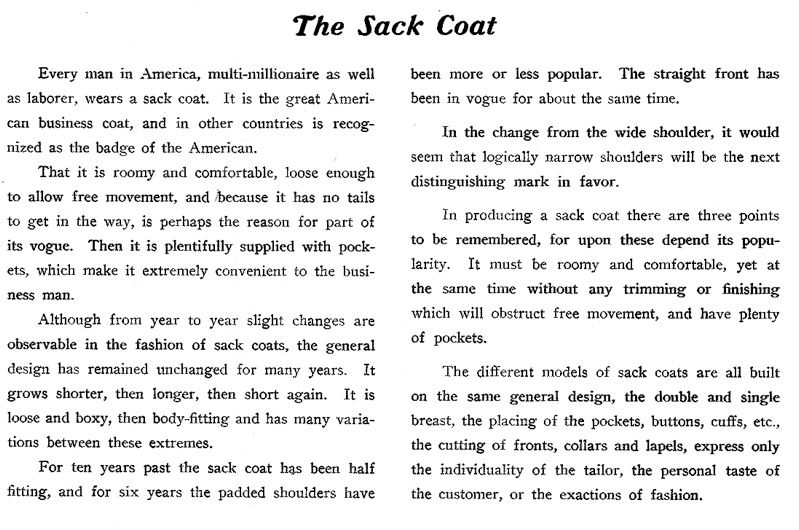I think it is a bit of a pity that American posters on the internet no longer use traditional terms like "cutaway" or "sack suit", although the term "Tuxedo" still endears itself to them.
The lack of front darts on a sack coat seems more related to the American preference for greater looseness of cut. This can still be observed on coats made by Oxxford for example - even though they make their sacks with a front dart in the English manner. It seems to be part of their 'unsuppressable' Americaness. J Press are the only RTW makers who omit the front dart on their sacks in the old fashioned American manner, and I believe they also cut with the same roominess traditionally favoured by Americans.
I find it fascinating that Americans continue to favour drapey cuts to this day even after largely abandoning the traditional term "sack coat". Here is Croonborg's 1907 introduction to his section on the sack coat:

Notice that he mentions that it is cut to be "roomy and comfortable, loose enough to allow free movement..."
As for the Duke of Windsor's choice of Scholte - a Dutchman - as a tailor, one should keep in mind Whife's discussion on how the drape cut probably had continental or American origins. Here is what Byrde (The Male Image, London, 1979) has to say about the DoW:
He was particularly impressed by America, its people and their way of life and tried to introduce some of their informality in dress and social habits to Britain. His influence over male dressing the 1920's was considerable although his taste was not always thought to be entirely reliable. He had a liking for flamboyant, colourful clothes and caused a sensation in 1924 when he arrived in America dressed in a grey double-breasted suit with wide lapels and tan suede shoes, both of which were generally regarded little short of caddish at the time.
Of course, in addition to adopting a more American/continental styled drapey lounge/sack coat, he took an American wife, even abdicating his throne to do so.






